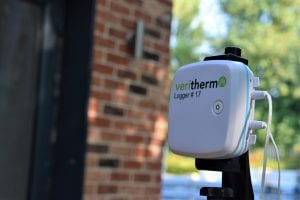Our friends at Veritherm have looked at the Future Homes standard to see what it holds in store for the “as built” energy performance. Here’s what they say:
Current Performance Outlook
The UK’s is committed to achieving net zero carbon emissions by 2050 and this is driving the need for higher insulation standards in buildings. However, recent building performance evaluation (BPE) studies, such as the State of the Nation Review, have shown that even new low carbon/zero energy homes can underperform compared to their EPC.
Inconsistencies in the building fabric can have significant impact. Flaws and errors in the construction, such as thermal bridges or missing or poorly fitted insulation, can compromise efficiency, and increase the performance gap between intent and reality. In some cases, this can be up to five times greater than expected with associated fuel bills and CO2 emissions being increased by a similar factor.
It is evident that national policy targets for the reduction of carbon cannot be met without first understanding, quantifying, and minimising this performance gap, as highlighted in the review.
Housing Performance Evaluation
So, what does the future look like?
The emergence of new ‘low-cost’ building performance evaluation tools, such as Veritherm [1], are making in-situ performance testing widely available and cost effective. Helping to ensure compliance with the design at hand-off between construction and management of a building .
.
With the recently concluded Future Homes Standard consultation, housing performance evaluation is set to become common practice on new-build and retrofit schemes. Greater responsibility is to now be placed with the Developer and Energy Assessor to make sure the energy performance is compliant with the design. The introduction of the Annex D compliance report will mandate as-built SAP calculations are accurate and will require a signature from both parties confirming this.
The Government’s recent ten-point green recovery plan is driving policy changes, with a new British Standard for Building Performance Evaluation consolidating all the available methodologies, techniques. The standard is currently being written with specific focuses covering building fabric, pre-occupancy, and handover processes.
Summary
In conclusion real-world measurement, monitoring and reporting will play a huge role in the coming decade with physical testing eventually replacing desktop studies. This will help to inform project development, enhance delivery, optimise building performance – ultimately making homes greener, warmer and more energy efficient.
[1] https://www.veritherm.co.uk/
BSRIA. (2020). Building performance evaluation. Available: https://www.bsria.com/uk/consultancy/building-improvement/building-performance-evaluation/#:~:text=Building%20Performance%20Evaluation%20(BPE)%20is,domestic%20and%20non%2Ddomestic%20buildings.
Gupta, R (Prof.), Gregg, M. (May 2020). State of the nation review. Performance evaluation of new homes. (1), 8.
HM Government. (Nov 2020). The Ten Point Plan for a Green Industrial Revolution. Available: https://www.gov.uk/government/publications/the-ten-point-plan-for-a-green-industrial-revolution/title#point-7-greener-buildings
HM Government. (2011). The carbon plan: Delivering our low carbon future. London: D. o. E. a. C. Change.
Ministry of Housing, Communities & Local Government. (Jan 2021). Consultation on changes to Part L (conservation of fuel and power) and Part F (ventilation) of the Building Regulations for non-domestic buildings and dwellings; and overheating in new residential buildings. The Future Buildings Standard., 4-183.
